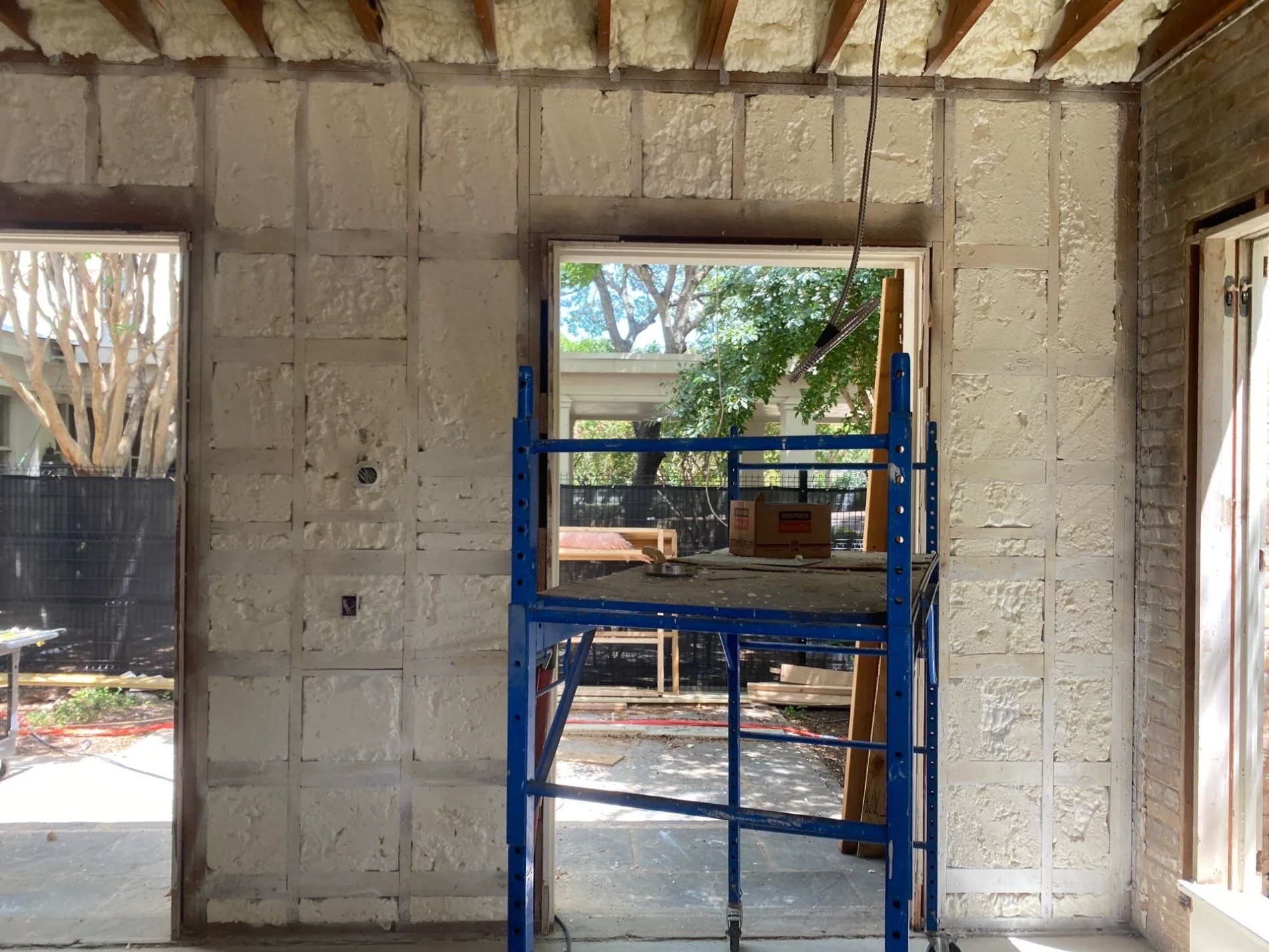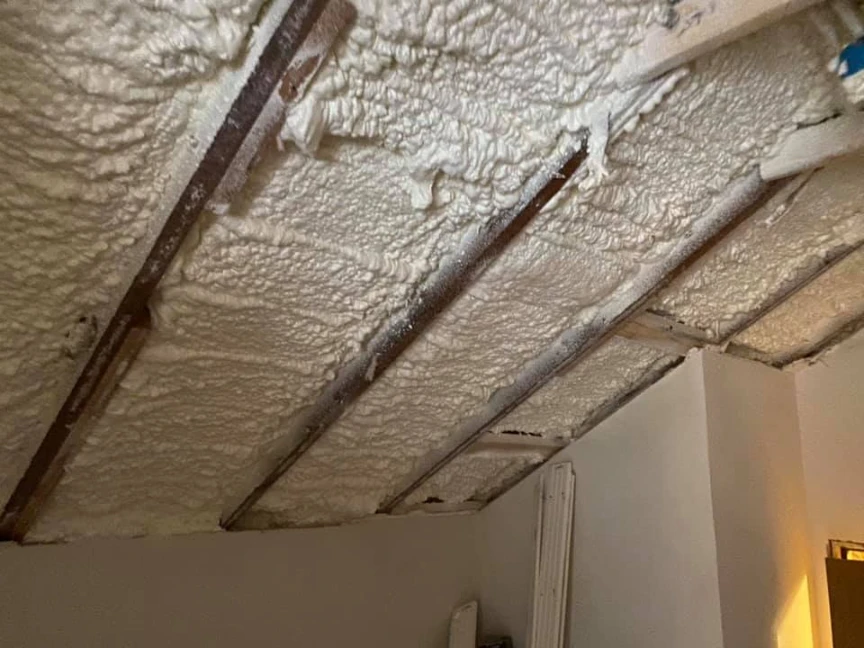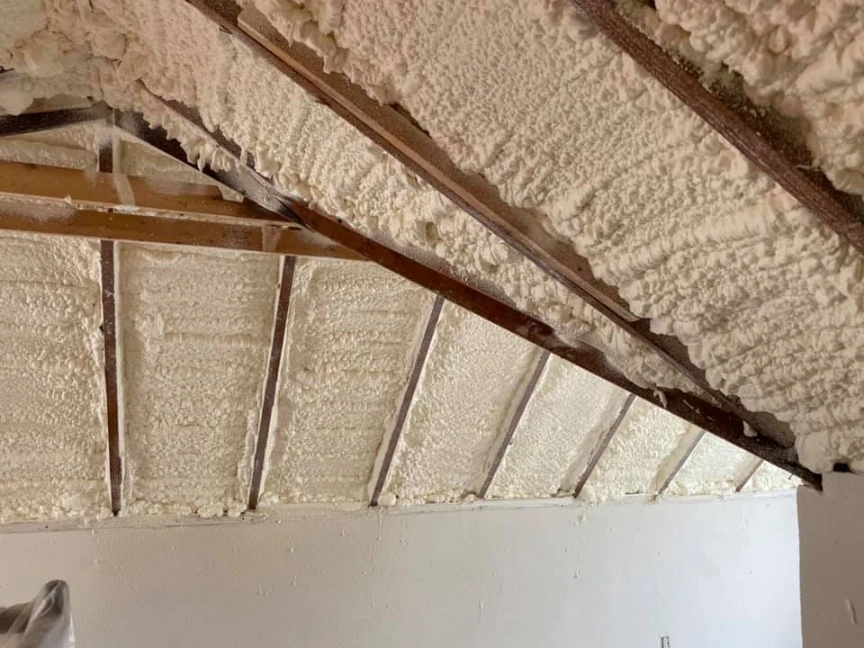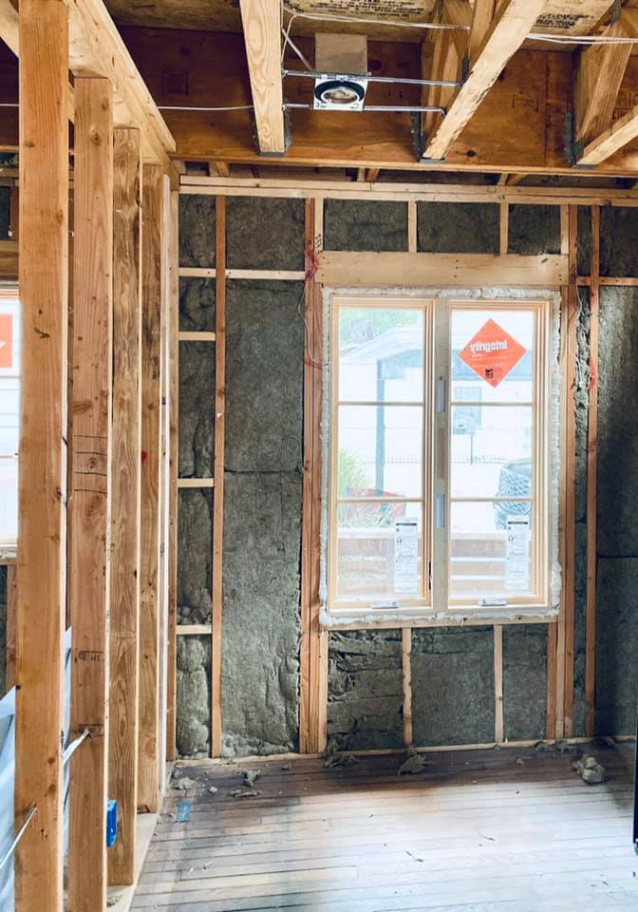Spray polyurethane foam (SPF) insulation is a combustible material. By itself, it can ignite and burn if exposed to a significant heat source. However, when installed correctly according to building codes, it is a safe and effective insulation product. The key to its fire safety lies in the mandatory installation of a thermal or ignition barrier over the foam. This barrier, typically 1/2-inch drywall, separates the foam from interior spaces, slowing a fire’s spread and giving occupants time to escape.
This article provides a clear, fact-based explanation of how spray foam behaves in a fire, the specific building codes that govern its use, and the protective measures required for a safe installation. This information is based on years of hands-on spray foam insulation installation experience in compliance with strict safety standards. Understanding these facts is essential for any property owner considering this type of insulation.
How Spray Foam Reacts to Fire
All foam plastic insulation, including spray foam, is flammable. These products are organic materials derived from petroleum, so they will burn. To counteract this, manufacturers treat spray foam with flame retardants during production. These additives are designed to slow ignition and reduce the speed at which flames spread across the foam’s surface.
It’s important to understand that flame retardants do not make spray foam fireproof. Their purpose is to inhibit the initial spread of a fire. When subjected to a continuous flame, the foam will eventually ignite. According to the U.S. Environmental Protection Agency, these chemicals interfere with the combustion process, making the material less flammable. The smoke produced during combustion is also a consideration, as it contains carbon monoxide and other irritants.
The two main types of spray foam, open-cell and closed-cell, react slightly differently.
- Open-Cell Foam: This foam is lighter and less dense. It tends to char and shrink away from a heat source, which can slow down the burning process.
- Closed-Cell Foam: This type is dense and rigid. It also chars but can maintain its shape for longer before breaking down. Its higher density means there is more plastic material to burn per square foot.
The Role of Thermal and Ignition Barriers
Because spray foam is combustible, building codes are very clear: it cannot be left exposed in most areas of a home or building. It must be covered by an approved barrier. The type of barrier required depends on the location of the installation.
Thermal Barriers for Occupied Spaces
A thermal barrier is a material applied over the spray foam to separate it from the interior living space. Its job is to delay a fire from reaching the foam for a specific period. The International Residential Code (IRC) specifies that a thermal barrier must have a 15-minute rating. This means it must stay in place and prevent the foam behind it from reaching its autoignition temperature for at least 15 minutes.
The most common and accepted thermal barrier is 1/2-inch gypsum board (drywall), properly installed and finished. Other materials like wood paneling or plaster can also serve as thermal barriers if they meet the 15-minute standard.
Ignition Barriers for Limited-Access Areas
In areas not used for living or significant storage, such as crawl spaces or some attics, a less stringent “ignition barrier” may be permitted. An ignition barrier’s purpose is to prevent the foam from igniting from a short-lived flame source, like a spark from electrical work.
Approved ignition barriers can include:
- Plywood or Oriented Strand Board (OSB)
- Drywall
- Certain spray-applied intumescent coatings
Bonus Tip: An intumescent coating is a special paint that swells up when exposed to heat, forming a protective char layer over the foam. This is a common and code-compliant solution for insulating areas where installing drywall is impractical.
Fire Performance Ratings Explained
Building materials are tested for their surface burning characteristics. The most common test is the ASTM E84, which measures flame spread and smoke development. Based on the results, materials are given a classification.
| Class | Flame Spread Index | Smoke Developed Index | Common Materials |
|---|---|---|---|
| A | 0 – 25 | 0 – 450 | Gypsum Board, Fiber Cement Siding, Intumescent-Coated SPF |
| B | 26 – 75 | 0 – 450 | Some Treated Woods, Certain Rigid Foams |
| C | 76 – 200 | 0 – 450 | Untreated Plywood, Hardboard |
Most spray foam insulation products alone have a Class B or C rating. However, when covered by a code-approved thermal or ignition barrier, the entire assembly achieves a Class A rating, making it suitable for residential and commercial construction. Data from the Spray Polyurethane Foam Alliance confirms that proper installation with these barriers is the basis for the material’s acceptance in building codes.
Things to Consider Before Making a Decision
Before you choose to install spray foam, think about these factors related to fire safety.
- Code Compliance: The single most important factor is ensuring the installation meets all local and national building codes. A qualified contractor will know exactly what type of barrier is needed for each part of your building.
- Application Area: Where the foam is installed determines the safety requirements. Foam in the walls of a finished basement requires a full 15-minute thermal barrier (drywall). Foam on the underside of a roof deck in an unvented attic might only need an ignition barrier.
- Installer Expertise: Proper installation is non-negotiable. The foam must be applied at the correct thickness, and the fire protective coating or covering must be installed without gaps or errors. An inexperienced installer can create serious fire hazards.
- Electrical and Heat Sources: All electrical wiring must be appropriate for use with spray foam. Junction boxes must remain accessible. The foam should not be sprayed too close to heat-generating fixtures like recessed lighting unless those fixtures are specifically rated for direct contact with insulation (IC-rated).
Bonus Tip: Always ask your insulation contractor to specify in their quote exactly what thermal or ignition barrier they plan to use and confirm it complies with your local building department’s requirements.
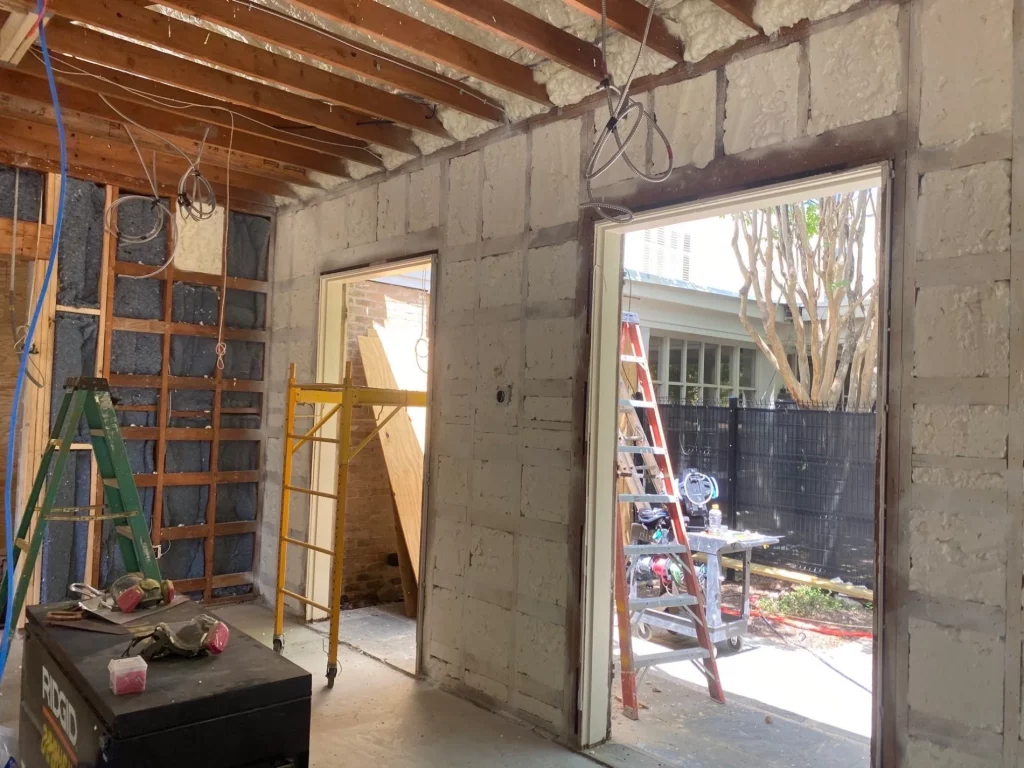
Frequently Asked Questions
Does spray foam release toxic fumes during a fire?
Yes. Like most synthetic materials, including carpets, furniture, and other plastics, burning spray foam releases toxic smoke. This is a primary reason fire codes require thermal barriers to delay its involvement in a fire, allowing occupants more time to escape.
Can spray foam be left exposed anywhere?
In very limited industrial or agricultural applications, codes may sometimes allow exposed foam. But in residential and commercial buildings, it is almost never permissible to leave spray foam exposed in any accessible area.
What exactly is an intumescent coating?
An intumescent coating is a fire-retardant paint. When heated, it undergoes a chemical reaction and swells to many times its original thickness. This creates a thick, insulating char layer that protects the material underneath (in this case, spray foam) from the fire.
Is open-cell or closed-cell foam safer in a fire?
Neither is inherently “safer” than the other. Both are combustible and require a thermal or ignition barrier. Their performance depends entirely on the correct application of these protective barriers as part of a code-compliant assembly.
How long does a thermal barrier protect the foam?
Standard thermal barriers like 1/2-inch drywall are rated to prevent the foam from reaching critical temperatures for at least 15 minutes. This 15-minute window is a standard set by building codes to provide a reasonable amount of time for evacuation.
Can electrical wiring be safely run through spray foam?
Yes, provided the correct type of wire is used and installed per the National Electrical Code (NEC). Modern non-metallic (NM) wiring is generally safe. The foam can actually help secure wires, but all junction boxes must remain accessible and cannot be covered over.
Final Thoughts on Safety
Spray foam insulation is a highly effective product, but its fire safety depends completely on proper insulation installation. When applied by a knowledgeable professional who strictly follows building code requirements for thermal and ignition barriers, it is a safe and reliable choice. The key is to view spray foam not as a standalone product, but as one component of a complete, fire-rated building assembly. Before moving forward, evaluate your specific project needs and ensure your chosen installer prioritizes code compliance above all else.
Get a Professional Assessment
To ensure your insulation project is safe, efficient, and fully compliant with fire codes, it’s best to consult with certified experts. For a detailed evaluation of your property, you can contact Stellrr Insulation & Spray Foam for professional insulation guidance. Reach out by phone at (512) 710-2839 or send an email to info@stellrr.com to discuss your project requirements.
Sources
- U.S. Environmental Protection Agency – Provides information on flame retardants used in consumer products, including foam insulation.
- International Code Council – The official source for the International Residential Code (IRC), which outlines the requirements for thermal barriers over foam plastic insulation
- Spray Polyurethane Foam Alliance – An industry organization that offers technical documents and fire safety guidelines for the installation and use of SPF.


